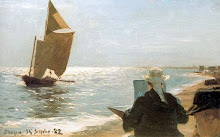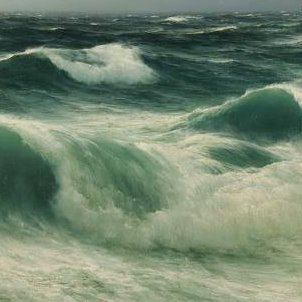
Tropic Seas, 13.5 x 20 inches

The Caribbean, 30 x 39 cm

Deluge, 48 x 60 inches

At High Tide, 20 x 24 inches

The Sea, oil on board, 36 x 49 inches

Crashing Surf, 16 x 20 inches
Judd Waugh was the most successful painter of seascapes, of his period, in America, and naturally has been much emulated by other artists. Such scenes in the hands of lesser artists have often degenerated into cliche or kitsch. His work needs to be seen in the context of his time.














































































